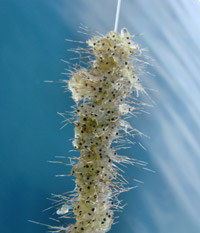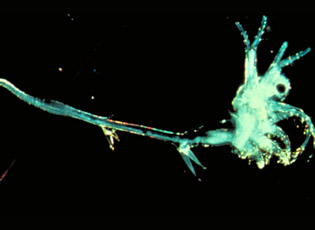The Minnesota Department of Natural Resources (DNR) confirmed that spiny waterfleas were discovered by anglers in Burntside Lake near Ely last week. Burntside Lake is a popular entry point into motorless area of the Boundary Waters Canoe Area Wilderness.

Water fleas are tiny, but pose threats to lake life. The animals can collect in masses like gelatin and may compete with fish for desirable native zooplankton.
“Spiny waterfleas can spread when boats, fishing or bait harvesting gear become contaminated with egg-laden females or when water from the infested lakes and rivers is transported,” said Rich Rezanka, DNR invasive species specialist. “Although the waterfleas can die between fishing trips, they might be carrying resting eggs that can begin a new infestation.” Spiny waterfleas are currently found in Lake Superior, Mille Lacs Lake, Fish Lake, and the U.S.-Canadian border waters such as Lake of the Woods, Rainy Lake and Namakan Lake as well as lakes on the Gunflint Trail north of Grand Marais.

The DNR will declare Burntside Lake infested, post signs and increase enforcement efforts on the lake. Transport of water in and out will be prohibited; livewells, bait containers and bilges must be drained.
Read the Full Article from the Minnesota DNR HERE >
Learn more about this and other invasive species threatening the Quetico Superior region on the Minnesota Sea Grant web site >

